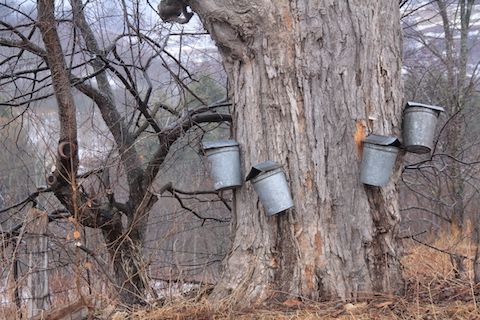
Above: Maple tapping by Karen Wallace, an entry in the 2016 Catskills Food Guide Photo Contest.
Want to make your own maple syrup? Here’s a step-by-step guide to small-scale backyard maple production:
Before you get started, here are some tips from the experts:
- Start small.
- Use galvanized pails or plastic buckets to collect sap. (The Hubbell Family Farm in Margaretville has three-gallon galvanized pails, covers and spiles available.)
- Sterilize all buckets, pans and tools. (Boiling water is best—avoid using any soap or chemicals.)
- Be sure that the sap is clear. Cloudy sap will make for spoiled syrup.
- Set up outside. “It’s a sticky endeavor,” said Jake Fairbairn, the co-owner of Tree Juice Maple Syrup, based in Arkville.
- Use flat (stainless steel or aluminum) pans over a heat source to boil off the majority of moisture. You can use a wood fire, a gas grill, a camping grill, or any other heat source to start the process outside.
- Finish the boiling process indoors in a tall stainless steel pot.
- Invest in a heavy duty candy thermometer. 219 degrees Fahrenheit is the magic temperature where maple sap becomes maple syrup.
1. Tap maple trees at least 31 inches in circumference.
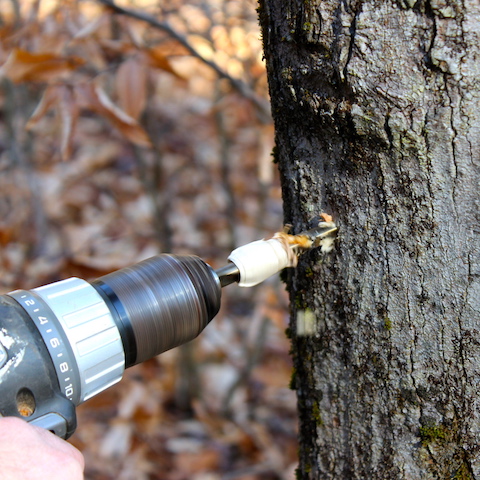
2. Insert spile.
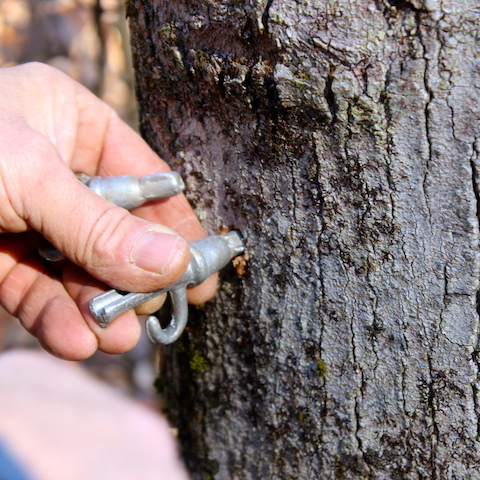
3. Hang bucket and cover.
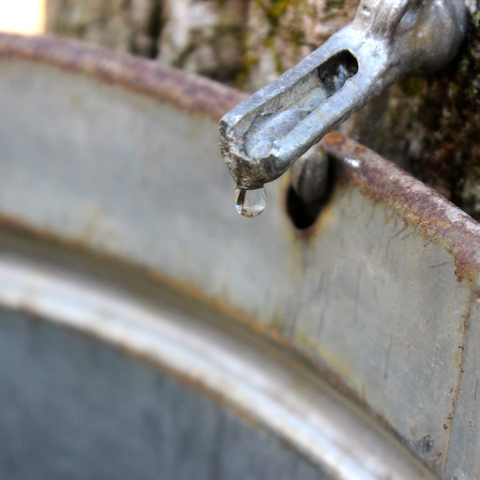
4. Evaporate majority of liquid over outdoor fire...
...or camp stove or gas grill.

5. Finish boiling process inside to keep a close eye on it.
A full pot of partially evaporated sap will boil down to just a couple of inches in an hour or two, depending on moisture content.
Those couple of inches will bubble almost to the rim once the critical temperature of 219 degrees Fahrenheit is reached. (Once the thermometer has reached 216 degrees, do not walk away unless you want a roasted-marshmallow-smelling sticky mess on your hands, or even worse, a fire).
At 219 degrees, sap becomes syrup. Take the sap off heat the immediately once this temperature is achieved.
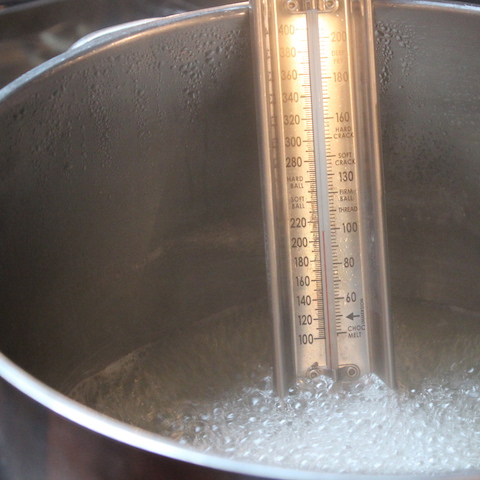
6. Be sure to filter your syrup at least twice and possibly three times.
(Cheesecloth will do.) This will reduce the amount of sediment in the syrup, although all homemade syrup is bound to settle a bit at the bottom.
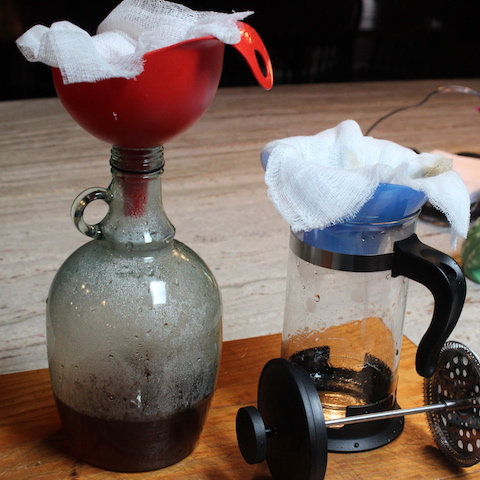
7. Store in the refrigerator unless you plan to heat process the syrup once it is bottled.
Syrup made this way will keep safely for up to one year.
More information on syrup making and safety can be found at Cornell Cooperative Extension and PennState Extension.
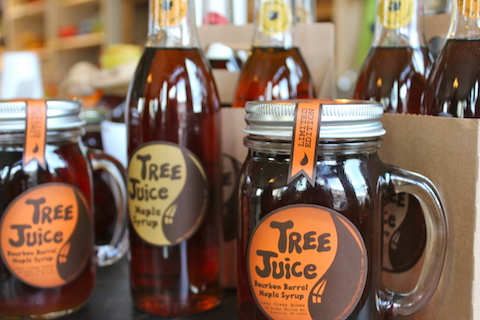
Above: Finished maple syrup from Tree Juice. Photo by Rebecca Andre.















